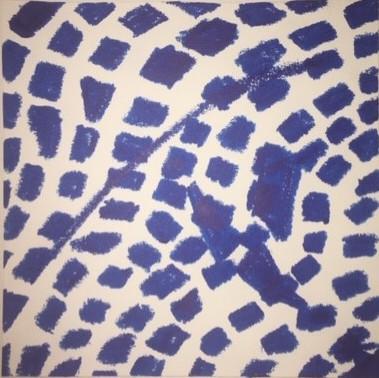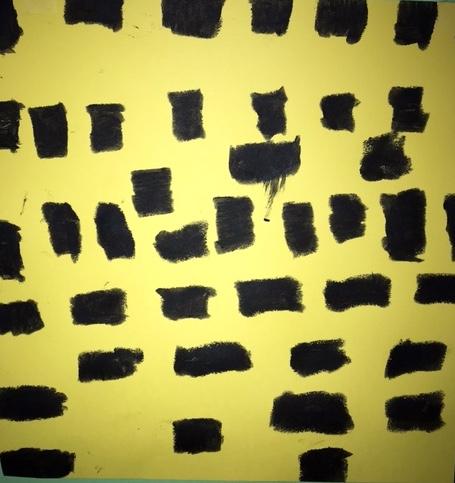Alma Thomas loved to explore color—which she did as an artist and art teacher, teaching in Washington, DC, public schools for over thirty-five years. Many of her paintings include only one color or a few colors. Her paintings show her love of nature and music.

Language
Look
What colors stand out to you?
What shape do you see repeated in this painting? Can you count the number of times it appears?
Step back and look at the painting from far away. Does it look like anything to you? Step forward and take a look at the painting when you’re very close to it. What does it look like now?
Imagine you could step inside the painting. What would it feel like?
What one word would you use to describe the painting? What do you see that makes you say that?
Read
Planting a Rainbow (Spanish language version: Cómo plantar un arco iris)
by Lois Ehlert
A mother and child plant a rainbow of flowers every year and wait for the rainbow to grow.
Little Leaders: Bold Women in Black History
by Vashti Harrison
This book offers short biographies of black women in history, including Alma Thomas.
Make: Create a Color Square

You Will Need
- Paint sticks
- Heavyweight paper cut into 8 × 8 inch squares
Choose one color from your paint sticks. Use it to make different shapes and lines within your paper square. Use just one color, like Alma Thomas, to make small blocks of color that build a larger painting. Try experimenting—turn the square or hold the paint stick differently—to create new marks and patterns! With a friend or a group, try combining your color squares in different ways to make one larger, multicolored square.
Vocab Bank
- bold
- experiment
Download
Art Tales: Coloring and Cut-Outs booklet (PDF, 3.5 MB)
Art Tales for Pre-K (PDF, 7.2 MB)
Primeros Pasos En El Arte (PDF, 7.5 MB)
Primeros Pasos En El Arte: Colorear y Recortes (PDF, 3.7 MB)
Visit
Register for the Art Tales pre-K school tour
Submit Student Work
Send images of your students' projects that follow these activities - email classroom@nga.gov
You may also like

Educational Resource: Art Starters: Mary Cassatt
A lesson for preschool to kindergarten students about artist Mary Cassatt's oil painting Little Girl in a Blue Armchair. Students learn how to look at this painting, what you can read to learn more, how to paint your own quiet moment, and a list of vocabulary terms related to this activity.

Educational Resource: Art Starters: Raphael
A lesson for preschool to kindergarten students about artist Raphael’s painting Saint George and the Dragon. Students learn how to look at this painting, what you can read to learn more, how to create a “courage” mask, and a list of vocabulary terms related to this activity.

Educational Resource: Art Starters: George Bellows
A lesson for preschool to kindergarten students about artist George Bellows' 1911 oil on canvas painting New York. Students learn how to look at this painting, what you can read to learn more, how to create your own city scene, and a list of vocabulary terms related to this activity.




